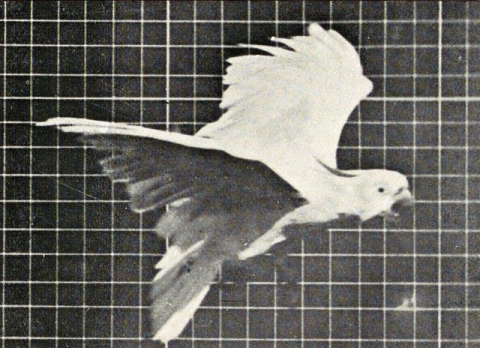
On March 13 in 1882, the English photographer Eadweard J. Muybridge (1830-1904) debuted his zoopraxiscope to a full house at the Royal Institution in London, where guests included the future King Edward VII and other members of the royal family. The device, an optical apparatus invented by Muybridge, presented projected images from a rotating glass disk in rapid succession to give the impression of motion.
Muybridge known for his pioneering work in photographic studies of motion, went on to present his invention at other institutions and events, including the "Zoopraxigraphical Hall" at the 1893 World's Columbian Exposition in Chicago. He would also write extensively on the topic and the device in Animals in Motion: An Electro-Photographic Investigation of Consecutive Phases of Animal Progressive Movements (1899) and The Human Figure in Motion: An Electro-Photographic Investigation of Consecutive Phases of Muscular Actions (1901).
This gif was assembled from a 1902 edition of Animals in Motion in Hagley Library's Published Collections department, and shows a chronophotographic series of images captured by multiple cameras of a parrot in flight, taken by Muybridge to study and reveal the mechanics of animal flight.

